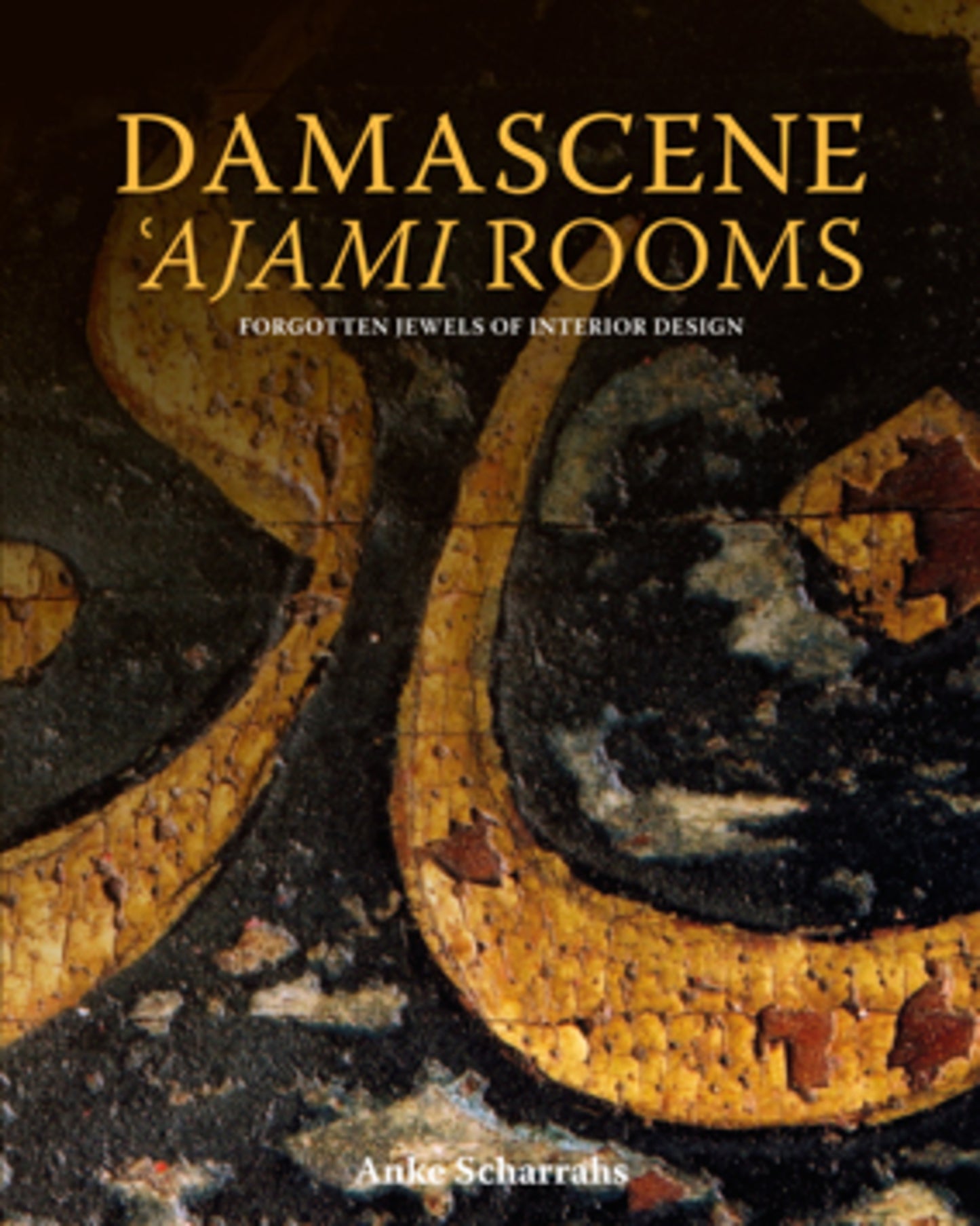We're sorry. An error has occurred
Please cancel or retry.
Damascene 'ajami Rooms

Some error occured while loading the Quick View. Please close the Quick View and try reloading the page.
Couldn't load pickup availability
- Format:
-
01 June 2013

This beautifully illustrated volume provides a unique insight into a sophisticated historical technique which was employed to adorn private interiors in traditional Arab courtyard houses in Damascus.
'Ajami decoration is almost universal in the interior adornment of Damascene houses, and this study, done from the stylistic, historical � as well as the technical � points of view, has resulted in a unique and valuable document on the history of Damascus decoration since the 17th century. The incredibly beautiful interiors of these houses bear silent witness to a bygone and almost-forgotten era of urban life in the Near East�each one an impressive masterpiece of the artisan�s craft. Painted and gilded stone reliefs, tinted plaster and patterned paste work decoration, elaborately painted wood embellished with metal leaf, mother-of-pearl inlays, and mirrors were combined in ever-varying and beautiful ways. Luxurious carpets, cushions, mattresses, small tables and stands, and porcelain and metal objects d�art ensured that the reception rooms were also comfortable living spaces.

ART / Conservation & Preservation, Conservation, restoration and care of artworks

Formalia
Foreword
Preface
Acknowledgements
I Introduction to the domestic architecture of Damascus
II Materials and techniques used for the decoration of Damascene residences
1 Stone and plaster decorations
1.1 Opus�sectile: stone mosaic
1.2 Stone reliefs: partially painted and gilded
1.3 Marble slabs with raised�ʿajami�decor
1.4�Ablaq�banding
1.5�Ablaq�paste-work
1.6 Upper wall zone
1.7 Landscape paintings
2 Wooden elements: doors, window shutters, wall panelling and ceilings
3 Glass gypsum windows
4 Mirrors
5 Tiles
6 Textiles
7 Damascene interior decorations: a harmonious concert of surface textures, gloss, colours and light
III�ʿajami�wall panels and ceilings: a general typology
1 Interiors with wooden cabinet doors, niche frames and window shutters placed in an undecorated or�ablaq�stone wall
2 Interiors with overall wooden wall panelling
2.1 Rooms consisting of a plain framework with richly decorated�ʿajami�panels
2.2 Rooms with entire panelling adorned with�ʿajamidecoration
3 Wooden ceilings
3.1 Visible beam ceilings: beam and coffer type
3.2 Visible beam ceilings:�shisha�type
3.3 Covered beam ceilings with centre panel and concentric frames
3.4 Covered beam ceilings with flat boards
3.5 Ceilings with three-dimensional openwork carvings and mirrors
3.6 Ceiling divisions: arch or beam construction
3.7 Additional ceiling elements: squinches and centre decorations
IV Other architectural and decorative elements of�ʿajami�interiors
1 Entrance doors
2 Window shutters, soffits and grilles
3 Niches and wall cabinets
4 Cornices and cornice boards
V Ornaments, paintings and inscriptions
1 Iconography of the painted decoration
2 Inscriptions
VI History of�ʿajami�decoration in Syria
1 Damascus
2 Aleppo
3 Further research
VII Historic materials and painting techniques used for�ʿajami�decoration
1 Wood types and construction
2 Reused building material
3 Preparation of the wood for the painted decoration
4 Ground layers
5 Underdrawing and underwriting
6 Application of raised�ʿajami�ornaments (pastiglia)
7 Metal leaf and foil application
8 Punchwork
9 Coloured glazes on metal leaf or foil
10 Paintings
11 Outlines
12 Textural contrasts in�ʿajami�rooms
VIII�ʿajami�workshops in the past and today
IX Surface appearance of�ʿajami�decoration today: aging phenomena and colour changes
1 Disruptions or damages occurring during the drying process of the paint layers
2 Fading and discoloration of paint layers
3 Surface changes due to metal corrosion
4 Colour and surface changes caused by later applied varnish layers
4.1 Darkening of blue smalt paint layers
4.2 Darkening of the overall colour scheme
4.3 �Islands� of dissolved glaze and varnish
4.4 Cracking and flaking in paint layers
5 Changes resulting from previous cleaning
X Bringing the old beauty back to life: an approach to the conservation and restoration of historic�ʿajami�rooms
1 Conservation approach
2 Treatment of cracking and flaking surface decoration
3 Cleaning
4 Removal of later applied paint layers
XI Catalogue of Damascene�ʿajami�interiors
1 Damascene�ʿajami�interiors with original preserved surfaces
XII Catalogue of�ʿajami�rooms preserved in collections worldwide
1ʿajami�rooms in Europe
Damascus Room, Victoria and Albert Museum, London
Damascus Room, Museum of Applied Art, Budapest
Damascus Room, Museum of Applied Art, D�sseldorf
Pierre Loti House, Rochefort
Damascus Room, Ethnological Museum, Dresden
Oriental Lounge, Bojnice Castle, National Museum, Slovakia
Arabicum, Villa Gutmann, Potsdam
Aleppo Room, Museum of Islamic Art, Berlin
2�ʿajami�rooms in America
Chicago World�s Fair, 1893
Brooklyn Museum, New York
Damascus Room, Cincinnati Arts Museum
Damascus Room, The Metropolitan Museum of Art, New York
Damascene�ablaq-ʿajami�interior, attributed to the �Quwatli house�
Hagop Kevorkian Center for Near Eastern Studies, New York University
Syria-Lebanon Room, Cathedral of Learning, University of Pittsburgh
Damascus Room and Syrian Room, Shangri La, Doris Duke Foundation for Islamic Art, Honolulu, Hawai'i
3�ʿajami�rooms in Asia and Africa
Robert Mouawad Private Museum, Beirut
Gayer-Anderson Museum, Cairo
Ottoman Room, Islamic Arts Museum Malaysia, Kuala Lumpur
Tareq Rajab Museum, Kuwait
Appendix
Glossary
Bibliography
Index



